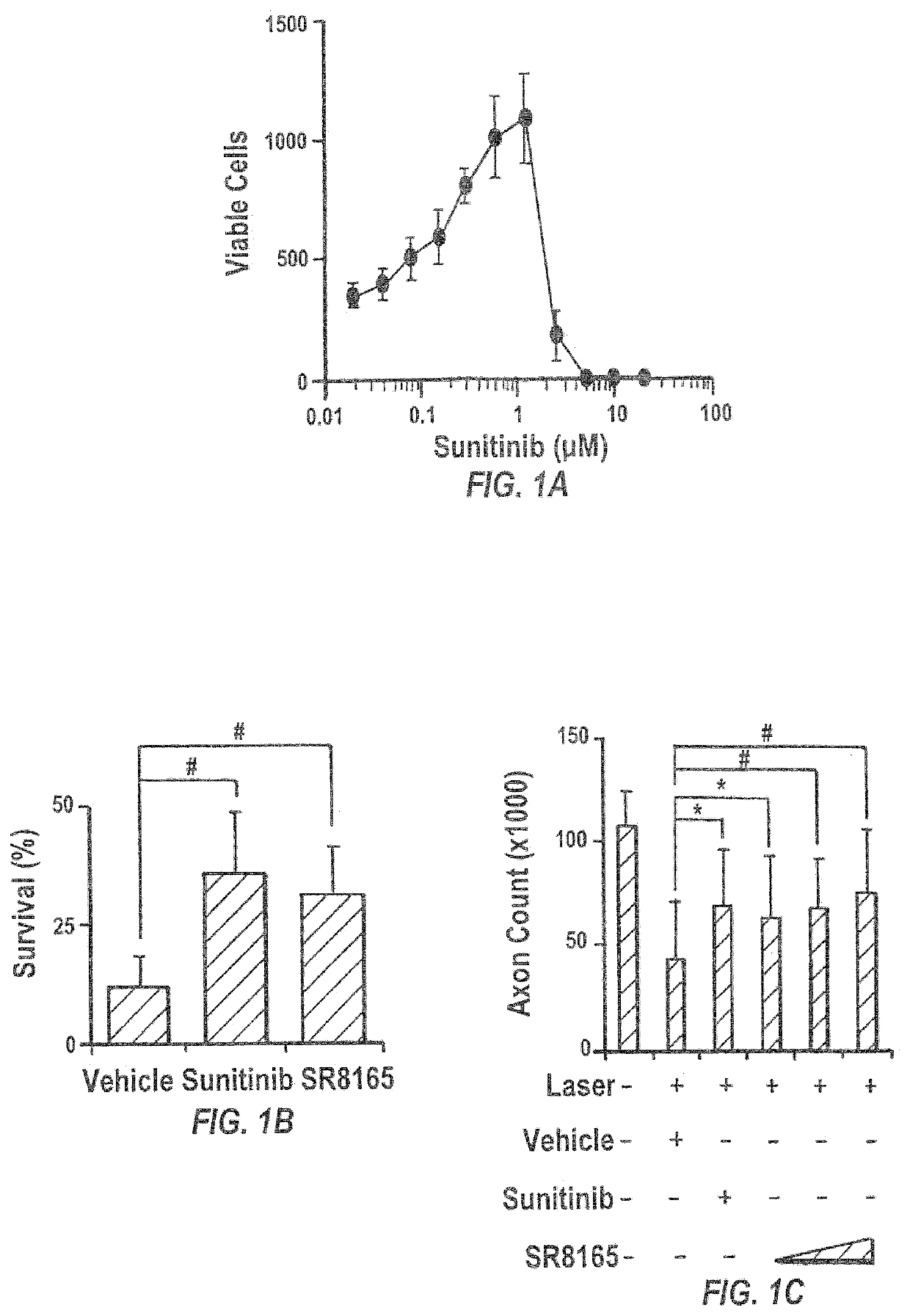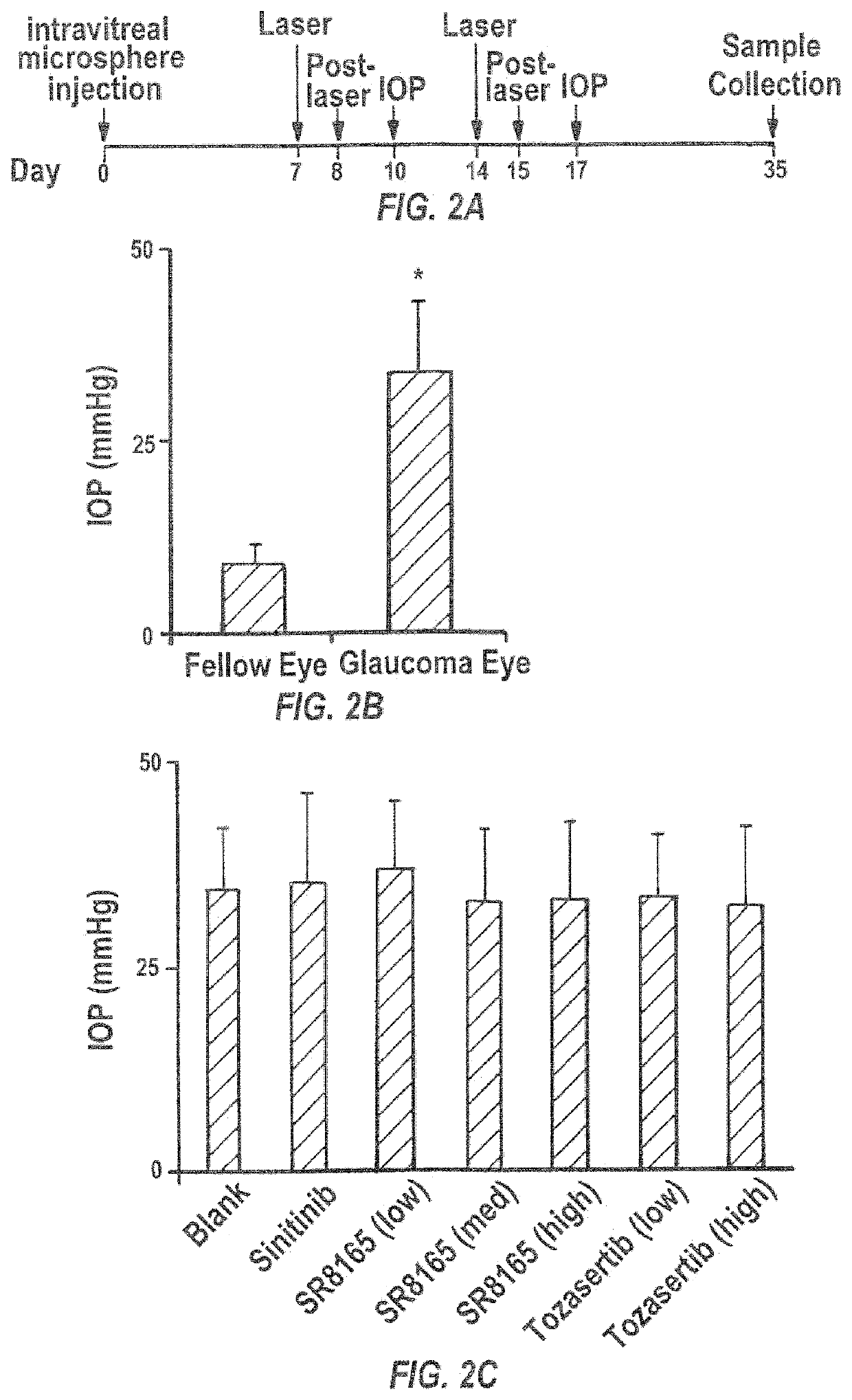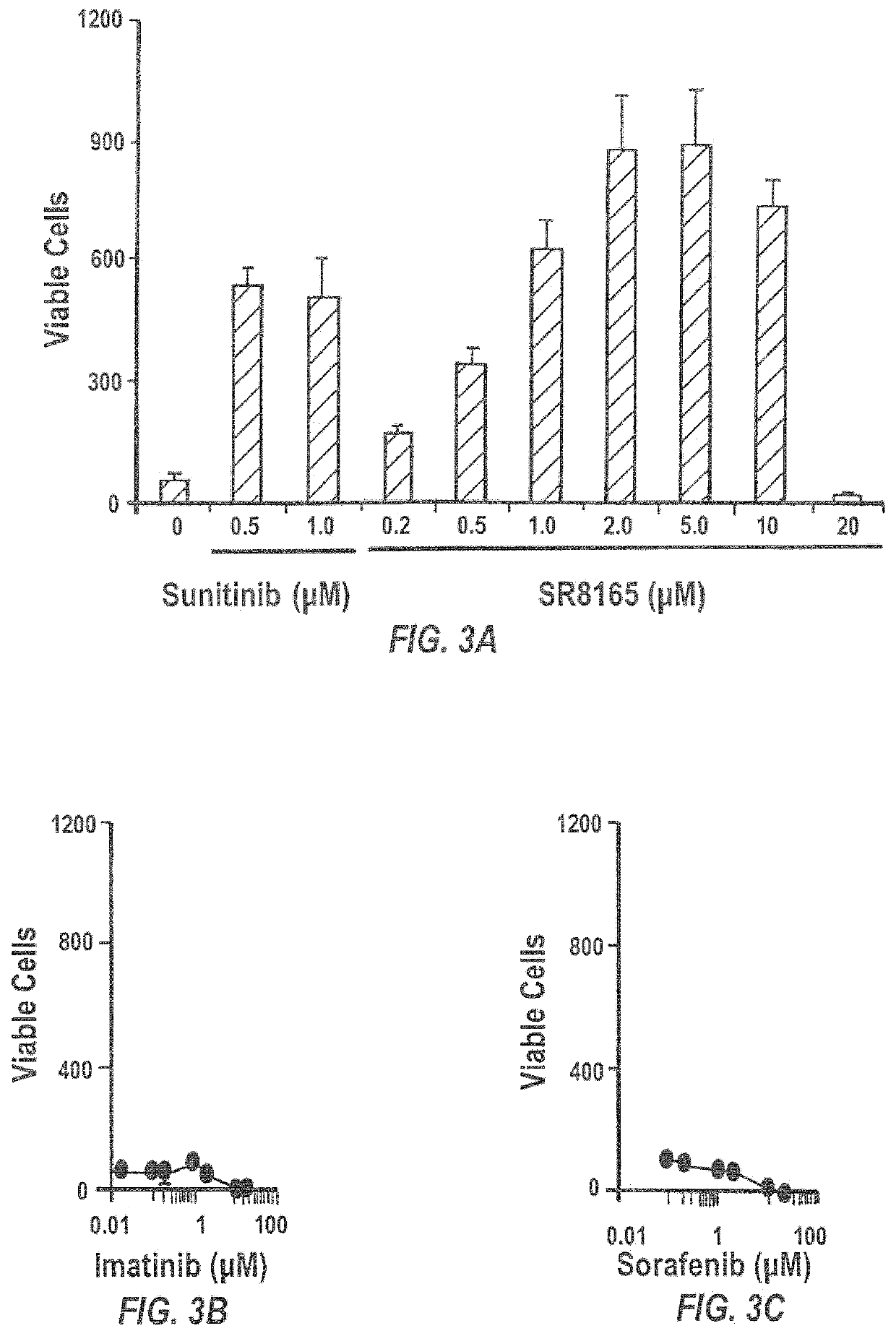Sunitinib formulations and methods for use thereof in treatment of glaucoma
a technology of sunitinib and glaucoma, which is applied in the direction of capsule delivery, drug composition, microcapsule, etc., can solve the problems of eye pressure increase, eye drainage canal blockage, gradual loss of vision, etc., and achieve the effect of preventing optic nerve damage, treating or reducing neuronal death, and reducing neuronal death
- Summary
- Abstract
- Description
- Claims
- Application Information
AI Technical Summary
Benefits of technology
Problems solved by technology
Method used
Image
Examples
example 1
on of Sunitinib-Encapsulated Microparticles and In Vitro Characterizations
[0188]Materials and Methods
[0189]Preparation of Sunitinib-Encapsulated Microparticles
[0190]Polymer microparticles of PLGA and / or a diblock copolymer of PLGA and PEG covalently conjugated to PLGA (Mw 45 kDa) (PLGA45k-PEG5k) with or without sunitinib malate were prepared using a single emulsion solvent evaporation method. Briefly, PLGA and / or PLGA-PEG were first dissolved in dichloromethane (DCM) and sunitinib malate was dissolved in dimethyl sulfoxide (DMSO) at predetermined concentrations. The polymer solution and the drug solution were mixed to form a homogeneous solution (organic phase). The organic phase was added to an aqueous solution of 1% polyvinyl alcohol (PVA) (Polysciences, Mw 25 kDa, 88% hydrolyzed) and homogenized at 5,000 rpm for 1 min using an L5M-A laboratory mixer (Silverson Machines Inc., East Longmeadow, Mass.) to obtain an emulsion.
[0191]The solvent-laden microparticles in the emulsion was t...
example 2
t of Aqueous pH on Encapsulation Efficiency of Sunitinib
[0203]Materials and Methods
[0204]As the solubility of sunitinib in aqueous solution was shown to be pH dependent, microparticle formulations encapsulating sunitinib were prepared in aqueous phases of various pH values to investigate the effect of aqueous pH on drug encapsulation.
[0205]Results
[0206]As shown in Table 2, the loading and encapsulation efficiency increased significantly when the aqueous pH was increased from 4 to 7.4. However, when the pH was adjusted to 10 and the aqueous solution became more basic, the morphology of many particles changed from spherical to irregular shapes and some particles formed aggregates, suggesting aqueous solution of high pH is also unfavorable for producing particles of high loading of sunitinib and high quality.
[0207]
TABLE 2The effect of aqueous phase pH on encapsulationefficiency of sunitinibMeanAqueousActualTargetEncapsulationdiameterSample IDpHloadingloadingefficiency(μm)DC-2-55-243.1%...
example 3
f Sunitinib for Glaucoma Treatment
[0208]Materials and Methods
[0209]Reagents
[0210]Sunitinib, lestaurtinib, crizotinib, axitinib, bosutinib, imatinib, tandutinib, vandetanib, sorafenib and vatalanib were purchased from LC labs, Forentinib, KW-2449 from Selleckchem, and tozasertib from Biovision life science.
[0211]PLGA Microspheres
[0212]Polymer microparticles loaded with sunitinib, SR8165, or tozasertib were prepared using a single emulsion solvent evaporation method. Briefly, a solution was made by mixing 200 mg of poly(lactic-co-glycolic acid) (PLGA 50:50, 2A, 0.15-0.25 dL / g, MW15K-17K, Lakeshore Biomaterials, Birmingham, Ala.) dissolved in 4 mL methylene chloride with one of various drugs dissolved in DMSO (40 mg sunitinib in 1 mL DMSO, 40 mg SR8165 in 0.5 mL DMSO, 40 mg tozasertib in 1 mL DMSO). The mixture was homogenized at 4000 rpm (Silverson Homogenizer, model L4RT, Chesham Bucks, England) for 1 min into an aqueous solution containing 1% polyvinyl alcohol (PVA, MW=25 KDa, Polys...
PUM
 Login to View More
Login to View More Abstract
Description
Claims
Application Information
 Login to View More
Login to View More - R&D
- Intellectual Property
- Life Sciences
- Materials
- Tech Scout
- Unparalleled Data Quality
- Higher Quality Content
- 60% Fewer Hallucinations
Browse by: Latest US Patents, China's latest patents, Technical Efficacy Thesaurus, Application Domain, Technology Topic, Popular Technical Reports.
© 2025 PatSnap. All rights reserved.Legal|Privacy policy|Modern Slavery Act Transparency Statement|Sitemap|About US| Contact US: help@patsnap.com



